May 2019
Honoring Yesterday – Protecting Tomorrow
Vol. 50, No. 5
What’s Inside
May Calendar of Events
Thurs., May 9, 9:30am
RESDC Board of Directors Meeting
8825 Aero Drive, Suite 205
Tues.-Fri., May 7-10
SACRS Conference, Lake Tahoe
Thurs., May 23, 9:30am
General Membership Meeting
SDCERA Board Room
Mon., May 27
Memorial Day
RESDC Office and SDCERA Office closed
![]() View the NETWORK
View the NETWORK
as a printable PDF
Are you on social media?
Stay connected with us!![]()
![]()
![]()
Quote of the Month
“The only title in our democracy superior to that of President is the title of citizen.”
▪ Louis Brandeis (1937)
President’s Message
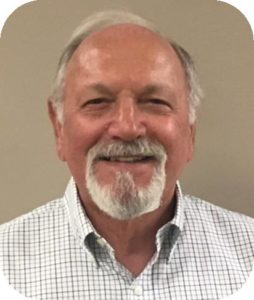
By John J. McTighe
We have just concluded the California Retired County Employees Association (CRCEA) Conference RESDC hosted at the DoubleTree Hotel in Mission Valley. I want to thank all of our members who volunteered to help make this a successful event. I especially want to thank our Executive Director, Mark Nanzer, and our Technology Manager, Liz Silverman, for their many hours of behind the scenes planning and preparation that went into making this the best CRCEA conference ever (I say without humility). Their attention to detail and anticipation of potential problems is without parallel. They have made RESDC the envy of all the other 1937 Act retiree associations. Thank you also, to our staff Karen Hazel and Marge Elmendorf for all of the assistance they gave to Mark and Liz in the process. Thank you to our speakers and sponsors without whom the conference could not have happened. Thank you especially to Board of Supervisors Chair Dianne Jacob for her welcoming remarks, getting the conference off to a good start.
Last month, I briefly reported on the California Supreme Court’s decision that left standing the California Rule and hinted at possible future court decisions. In their usual fashion, the San Diego Union-Tribune (UT) published an editorial that put a negative slant on the decision. A group of us representing three local retirement associations submitted an editorial commentary to the UT which they refused to publish, ostensibly because of its length. We chopped down our original submittal and the UT did publish the slimmed down version on March 16. A link to that can be found at: https://www.sandiegouniontribune.com/opinion/letters-to-the-editor/sd-pension-promise-california-rule-utak-20190316-story.html. Unfortunately, we had to cut out a lot of important information in order to comply with their required word limit. I think it’s important, though, that our members get a chance to read the entire original editorial commentary that we prepared, so we have reprinted it in its entirety: read the original editorial commentary. ◾
Into the Weeds
By Stan Coombs, Director
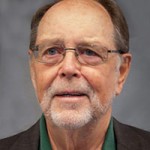 “I’m going to go into the weeds a bit today,” he said, with a cautious sideways glance.
“I’m going to go into the weeds a bit today,” he said, with a cautious sideways glance.
The speaker was Paul Angelo, the San Diego County Board of Retirement’s popular actuarial consultant, and the context was the Board’s March 21, 2019 Annual Retreat, in their board room in Mission Valley. Readers can picture the annual retreat as a once-a-year, casually dressed assemblage of nine board members and twenty-odd staff, consultants and pertinent observers, when more-complicated-than-usual issues are tackled in more detail and with a little more humor than at their regular monthly board meetings.
Angelo’s presentation appeared on the agenda as a “Review of UAAL Amortization Bases.”
“UAAL” is an acronym for “Unfunded Actuarial Accrued Liability,” jargon for the retirement system debt, and “Amortization” refers to the gradual pay-down of those liabilities. Apparently, Angelo planned to discuss a listing of UAAL payments due. . .truly a dip into administrative minutia, one would think.
But there’s more to trivia than sometimes meets the eye. Public retirement debt is serious stuff, at the root of considerable public controversy, facilitated by dramatic media reports whenever the subject appears on public agendas, and particularly when debt totals rise. We’ve discussed before how vacillating debt levels are inevitable features of public defined benefit retirement systems, principally due to inevitable variations in investment earnings.
So, let’s try our own little dive into the weeds. Our San Diego County Employees Retirement Association UAAL, simply referred to as the “unfunded liability” from here on, totaled $3.398 billion on June 30, 2018, according to Angelo’s report.
That big number needs perspective. Tracy Sandoval, County Deputy Chief Administrative Officer, reported on this same occasion that the 2018-19 county budget totaled $6.27 billion, and total salaries and benefits within that budget totaled $2.231 billion. In other words, we are currently 78.4% funded, and our total unfunded liability is half the size of one year of county costs and about one-and-a-half times one year of county staffing costs.
Our Board of Retirement uses a layered approach to manage these unfunded liabilities, treating each specific liability and each unanticipated “gain” as a separate event, individually amortized and paid off or acknowledged over 20 years. And, while normal costs of the county retirement system are funded jointly by employee salary deductions, investment earnings and the County, unfunded liabilities are entirely funded by the County.
Additional debts are added to the UAAL amortization schedule when invested retirement fund earnings are less than predicted, or when long-term earnings assumptions, upon which funding plans are based, are reduced due to changes in the markets. On the other hand, instances when earnings exceed expectations, or long-term earnings assumptions are increased, or the County makes extra payments against the unfunded liability to quicken the pay-down, all count as gains.
A UAAL amortization schedule is simply a tabular sheet with columns showing each added debt and gain, current outstanding balances for each, the number of years remaining to fully amortize each, and scheduled annual payments due. So, the SDCERA June 30, 2018 UAAL Amortization Schedule includes 20 partially acknowledged debts and gains occurring between 2004 and 2018, with total outstanding unfunded liabilities of $3.398 billion, and current annual County payments due for the combined lot, of $365.8 million.
But what’s so important about an obscure accounting tool that warrants a trip down from San Francisco and presentation by our actuarial consultant? We were to learn.
With a colorful and complicated bar and line chart, Angelo demonstrated how much county payments on the unfunded liability would total for each of the next 20 years under current circumstances. The chart couldn’t, of course, predict effects of inevitable future deficit and higher-than-expected earning years during that period.
Nevertheless, county payments on the reported unfunded liability are projected to rise from next year’s $365.8 million to roughly $425 million in 2023, drop to about $250 million in 2025 when a large part of the debt is retired, only to rise to over $400 million again in 2028, as a number of previously contributing financial “gains” become fully acknowledged by the accounting system, and no longer show as revenue.
Of course, all this invited inquiries about whether the projected $150 million increase in county payments between 2025 and 2028 can be avoided (?)
Aha! Angelo figuratively responded…It turns out there are possibilities. Assuming the Board of Retirement decided to do so, they could charge the County slightly higher payments in the early years, before 2025, thus paying off more of the unfunded liability earlier and flattening out the otherwise needed rise in payments later on.
The discussion ended with the break for lunch. Top county staff was in attendance and participating…and that’s as deep as we’re getting into the weeds today.
Methinks there will soon be discussions between the two agencies. ◾
Pension Facts
Wisconsin Retirement System Unique
Pension Facts at a Glance
4.42% to 6.39%
California state and local government contributions to pensions as a percentage of all state and local government direct spending, FY 2007 to
FY 2016. (NASRA Issue Brief, March 2019)
By Chris Heiserman, Director
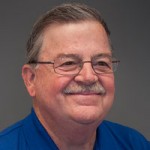 The Wisconsin Retirement System (WRS) is one of the best-funded pension systems in the country, with 99% of the assets in 2016 to cover its long-term liabilities. WRS provides retirement, disability and death benefits to all state employees and to most local government workers in Wisconsin. According to a 2018 Fact Sheet, WRS participants included 257,413 active employees, 203,300 annuitants (retirees, disability recipients and beneficiaries), and 172,089 inactive employees with deferred benefit payable.
The Wisconsin Retirement System (WRS) is one of the best-funded pension systems in the country, with 99% of the assets in 2016 to cover its long-term liabilities. WRS provides retirement, disability and death benefits to all state employees and to most local government workers in Wisconsin. According to a 2018 Fact Sheet, WRS participants included 257,413 active employees, 203,300 annuitants (retirees, disability recipients and beneficiaries), and 172,089 inactive employees with deferred benefit payable.
What makes it so unique? First and foremost, it’s a plan where employees and taxpayers share the risk of financing pensions. In most Defined Benefit (DB) public retirement plans, workers and their employers both contribute to pension investment funds but any shortfalls or under performance in earnings is borne by the government agency (taxpayers). In traditional DB pension plans retirees earn a guaranteed lifetime benefit and often receive regular cost of living adjustments (COLAs). In WRS members contribute to a Core Trust Fund and receive a minimum guaranteed monthly benefit set at retirement. They receive no COLA but after retirement their monthly benefit may increase or decrease each year based upon system investment performance calculated over rolling five-year periods (to avoid abrupt changes). Contribution levels for both employees and government agencies are also adjusted regularly.
In addition, plan participants can choose to put up to half of their contributions in a non-guaranteed Variable Trust Fund that may achieve higher investment earnings. In a recent WRS newsletter, Trust Fund Secretary Robert Conlin spoke of the unique benefit design where active employees, retired members, and the taxpayers all share in the risk and reward of investment performance. He said, “When performance is good, benefits go up and contributions go down. When performance is poor, benefits go down and contributions go up. This is not the norm in most public pension plans…”
The WRS newsletter included estimates of upcoming benefit adjustments based on 2018 investment performance. Preliminary 2018 Core and Variable Trust Fund investment results were negative 3.3% for the Core Fund and negative 7.9% for the Variable Fund. Factoring in those figures (gross of fees), the Trust Fund managers are anticipating either no change or a -0.5% adjustment (decrease) in retirees’ Core benefit payments beginning May 1st. Those participating in the Variable Trust Fund could see a 10-14% reduction in the Variable portion of their monthly benefit payment. This was obviously a down year for investment returns; however, over the years from 1998 to 2017 the average return in the Core Trust Fund was 7.8% and the median return was 10.6%. For the Variable Trust Fund over the same range the average return was 8.9% and the median was 11.7%. For many of these years, retirees would have seen their monthly benefit rise.
Wisconsin provides retirees a relatively modest pension benefit. The average WRS state and local pension benefit in 2016 was $24,897 (according the Census Bureau), ranked 19th among the 50 states. Most public employees in Wisconsin also participate in Social Security.
A large part of the uniqueness in the WRS is its origination in 1975 legislative action to consolidate state and local pension systems into a single organization and fit together various benefit formulas into a new shared risk hybrid model incorporating facets of both traditional DB plans and Defined Contribution (DC) or 401(k) models. The automatic adjustments built into the plan contribute to efficiency and moderate overall costs. A study by National Association of State Retirement Administrators (NASRA) found that in 2016 Wisconsin used 2.13% of overall state spending to pay for its pensions, the fourth lowest share in the nation. Similarly, in 2015, Wisconsin state and local retirement contributions were just 2.2% of all state and local spending, less than half the national average.
Unlike many public retirement plan sponsors across the nation, Wisconsin participating employers regularly appropriate the full actuarially calculated contributions to WRS investment funds. This results in a routinely high funding level and the shared risk aspect of the plan design produces a predictable, stable benefits structure and little fluctuation in required employer contribution rates.
The WRS shared risk pension model seems fair and equitable to all parties, but it’s not likely to become emulated by sister states any time soon. Many states are mired in the fiscal challenges of seriously underfunded retirement plans and they have no realistic possibility of starting from scratch with a new shared risk approach. In addition, a significant number of public retirement plans don’t have the flexibility of adjusting monthly payments based on investment performance because benefits are considered contractual property rights. ◾
Bits and Pieces
Lucille Baker and her husband, Richard, moved to Florence, Oregon in 1985 after she retired from the San Diego County Jail where she served as a nurse. Richard passed away in 2000 and in 2013, Lucille moved to Tacoma, Washington where she now lives at Merrill Gardens, an independent and assisted living community. She looks forward to celebrating her 99th birthday in December of this year! ◾
Members’ “Say” in May
By Chuck Brown, Membership Committee Chair
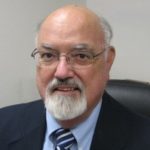 Why should I join RESDC? That’s probably one of the first questions we hear when talking with our friends about joining RESDC. Perhaps the easiest way to answer it is to ask ourselves, “Why did I join RESDC?”
Why should I join RESDC? That’s probably one of the first questions we hear when talking with our friends about joining RESDC. Perhaps the easiest way to answer it is to ask ourselves, “Why did I join RESDC?”
We threw this out to the RESDC board members and here’s what some of them had to say:
Sarah Brooks: My friends encouraged me to join RESDC. I’m glad I did because I’ve enjoyed many social and educational events and appreciate the advocacy component and learning more about important issues that affect all County retirees.
Chuck Brown: I learned about RESDC a couple of years before I retired and asked some retiree friends about it. They all said, “Join, for sure!” I was attracted most by the advocacy for county retirees and the expansive additional benefits offered. The variety of general membership meetings and other events allows us all to stay in touch.
Stan Coombs: I joined RESDC because I knew that members of the County retirement system can’t effectively monitor and influence complicated public retirement policy individually and can only do so by joining together and speaking out through a knowledgeable, effective membership organization.
Chris Heiserman: My wife Sonya and I had a lot of community service and volunteer activities on our plates even before we retired. We both enjoyed our County careers and the people we worked with over the years and RESDC information and events make it possible for us to stay in touch with friends and former colleagues and keep up with retirement-related news.
 May Action – We would like to hear from you! Why did you join RESDC and how would you say that to convince your peers to join? We’ll publish statements in future NETWORKs and online. (In the fine print – By submitting, you agree to give full publishing rights to RESDC of your name and statement, etc.) Please send statements to RESDC, 8825 Aero Drive, Suite 205, San Diego, 92123 or by email to resdc@resdc.net.
May Action – We would like to hear from you! Why did you join RESDC and how would you say that to convince your peers to join? We’ll publish statements in future NETWORKs and online. (In the fine print – By submitting, you agree to give full publishing rights to RESDC of your name and statement, etc.) Please send statements to RESDC, 8825 Aero Drive, Suite 205, San Diego, 92123 or by email to resdc@resdc.net.
Do you know a County retiree who is not yet a member of RESDC? Share our membership webpage https://www.resdc.net/become-a-member/ with them or print and give them the RESDC membership enrollment form (on the member page). ◾
Courts are the Ultimate Deciders of Pension Law
Why do the UT Editors have such difficulty accepting court rulings when it comes to pensions? Our system of justice gives the Legislature the authority to craft laws, the Governor the authority to approve (or not), and the Judiciary the role of interpreting the validity and meaning of those laws. Alternatively, the voters, through initiative, can make law; but that too is subject to judicial review.
In 1955, the California Supreme Court determined that the law, with respect to pensions, established that workers enter into a contract with the employer on their first day of work and those contractual rights cannot be diminished (unless the employee agrees). It is now known as the California Rule. It has been recognized law in California for over 70 years. Public employers have thus known that if they offer a pension benefit upon hire, they can’t reduce it at will.
Recently, the California Supreme Court ruled on a separate issue related to pensions—an opportunity offered to State employees to purchase up to five years of additional service credit (ARS) in their pension system at a price intended to be cost neutral to the pension system. Alas, it seems that the employer (the State) priced this incorrectly and the Legislature, with the approval of the Governor, passed legislation which revoked it.
The Supreme Court upheld this revocation as lawful. They said, “We conclude that the opportunity to purchase ARS credit was not a right protected by the contract clause. There is no indication in the statute conferring the opportunity to purchase ARS credit that the Legislature intended to create contractual rights. Further, unlike core pension rights, the opportunity to purchase ARS credit was not granted to public employees as deferred compensation for their work.” [emphasis added]
Not surprisingly, the UT Editors lauded this decision. In doing so though, they implored the Supreme Court when considering other pending pension benefit cases to nullify or substantially modify the California Rule, allowing public employers to reduce workers’ retirement benefits mid-career.
Moreover, the Editors said of the long-recognized 1955 ruling, “How was such a sweeping decision made without the explicit approval of the lawmakers elected to represent Californians? That’s not how democracy should work.” But it is, of course, how democracy works. The Editors would presumably welcome an opposite judicial determination without the approval of lawmakers.
The California Rule is by no means unique. According to the National Public Pension Coalition, “A majority of states (34) follow a contract rights approach to public pension benefits.” Moreover, a dozen follow the California Rule more specifically.
Let’s apply this concept of contract law to a contract familiar to homeowners—a mortgage. Imagine that a homeowner enters into a 30-year fixed mortgage contract with a lender and plans a future based on that contract. Would it be fair or legal for the lender, in light of changed economic conditions, to change the interest? Clearly not.
The UT Editors’ profound dislike of pensions has created some serious problems locally. They supported a local 2012 ballot proposition (Proposition B) to eliminate pensions for most newly hired City of San Diego employees and to freeze pay for all employees for five years. When this proposition was challenged as being legally defective, the Editors insisted otherwise.
Recently the Supreme Court unanimously ruled that Proposition B was indeed defective, so remedies are in the works. Since passage of Proposition B though, San Diego has been left hamstrung as the only public employer in California with no pension for new-hires and has had substantial challenges recruiting and retaining employees.
Public employees are servants of the people. We take great pride in the services we provide, whether it be maintenance, recreation, public safety, or any manner of service needed. Is it unreasonable, in exchange, to expect that a promise made is a promise kept?
John J. McTighe, President
Retired Employees of San Diego County
Jim Baross, President
City of San Diego Retired Employees’ Association
Tony Hancock, President
City of San Diego Retired Fire and Police Association ◾
General Membership Meeting
When: Thursday, May 23, 2019
Time: Beverages and light refreshments will be available at 9:30 a.m. Speakers will begin at 10:00 a.m.
Place: SDCERA Board Room, 2275 Rio Bonito Way, #200, San Diego, 92108
Our program will include presentations from two great RESDC partners, Nationwide Retirement Solutions and My Senior Health Plan.
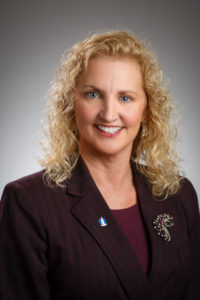 |
Cathie Purdon, a Personal Retirement Consultant with Nationwide will provide information related to the County of San Diego Deferred Compensation Program and as a retiree how to ensure you are on track in managing your plan. |
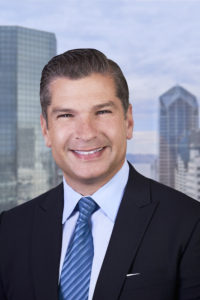 |
Pete Blasi from My Senior Health Plan will highlight how they work exclusively with the Medicare-eligible population to ensure that retirees are not paying too much for health insurance premiums. My Senior Health Plan provides a FREE review of all your Medicare insurance options, including those available in San Diego County. Presentation topics include:
|
RSVP requested but not required. Visit: www.resdc.net/events or call 619-688-9229. ◾
Understanding the Benefit Plans Available to RESDC Members
By Greg Margulies, Pacific Group Agencies
 As the RESDC Benefit Plans Administrator, we constantly receive calls from members with questions about the benefit plans offered exclusively to members. Questions usually revolve around what plans are available and which plan is best for them. Below is a brief breakdown of the plans available. If you would like more information, please contact us at (800) 511-9065. Note: Dental enrollment is limited to the Open Enrollment period or with a Qualifying Event, but all other plans are available for enrollment year-round.
As the RESDC Benefit Plans Administrator, we constantly receive calls from members with questions about the benefit plans offered exclusively to members. Questions usually revolve around what plans are available and which plan is best for them. Below is a brief breakdown of the plans available. If you would like more information, please contact us at (800) 511-9065. Note: Dental enrollment is limited to the Open Enrollment period or with a Qualifying Event, but all other plans are available for enrollment year-round.
- Dental – RESDC offers an Ameritas PPO and a Cigna $0 Co-pay HMO plan. Both plans are comprehensive, covering the routine preventative up to the major services like crowns and dentures. The Ameritas PPO plan allows you the freedom to use any dentist, but if you use an Ameritas network dentist, you will receive their discounted rates that can save you 40% or more. The Cigna HMO plan requires you use a dentist in the Cigna dental network.
- Vision – Two plans are available, a comprehensive VSP plan that includes coverage for an examination and an Ameritas plan that covers materials only (lenses and frames) that is designed for those members who have Kaiser or Health Net medical coverage, which includes a vision examination.
- Travel – Multiple plans are available to meet your needs. Whether you’re looking to insure your non-refundable trip costs, cover any unexpected medical expenses while traveling internationally, or looking for help getting you back home after a medical emergency, we have a plan to cover your needs.
- Pet – Members have access to both United Pet Care (UPC) and Nationwide Pet Insurance. The UPC plan works like an HMO where you receive deep discounts when using one of their network vets. Nationwide has plans that can be tailored to meet your specific wants, from covering everything to only covering the catastrophic.
- Term Life – The most popular type of life insurance policies, available to healthy members who are seeking a benefit of $100,000 or more. Policies require a free medical exam.
- Legal Services – Provides access to a nationwide network of attorneys. Members receive a free Will, contract/document review, legal letters written on your behalf, IRS audit protection, motor vehicle services, and much more, all for one low monthly cost.
- ID Shield – In addition to credit monitoring, this program monitors the internet “Dark Web”, social media, court records, and much more to help make sure no one is using your personal identity.
- Home & Auto – Numerous companies are quoted to provide you the best policy to meet your needs.
- Amplifon Hearing Health Care – Members have access to this FREE hearing aid discount program, which provides average savings of 62% off manufacturers’ suggested retail prices and provides numerous ancillary benefits. ◾
Deckard Technologies Hiring Property Tax Appraisers
 Deckard Technologies, Inc. (www.deckardtech.com) would like to hire experienced, currently working or retired, property tax appraisers. The assignment will be to:
Deckard Technologies, Inc. (www.deckardtech.com) would like to hire experienced, currently working or retired, property tax appraisers. The assignment will be to:
- Review Deckard’s real property findings for potential missed assessments.
- Analyze permit and historical information to validate those conclusions.
Deckard has created “lookback” software to find real property improvements that were done without plans and permits and therefore were never put on the tax rolls.
Deckard has its mission to assist counties with fairness, accuracy and safety. Please let anyone you know of this opportunity.
The benefits of the work serve all the entities who depend on property tax revenue including schools, fire, police, hospitals, environment, health, etc.
If interested, please send a resume to CEO Neil Senturia at: neil@deckardtech.com. ◾
Recent Events
- SDCERA update – New Friday Member Service Center and Call Center Hours—As of April 12, 2019, SDCERA’s Member Service Center (MSC) and Call Center closes every Friday at 3:00 p.m. to allow SDCERA staff to participate in team training and education activities. The MSC’s Monday through Thursday hours remain the same, 8 a.m. to 5 p.m.
- Protect Pensions New One-Pager: Tired of hearing false narratives that pensions don’t benefit economies? See the new one-pager released by the National Public Pension Coalition for info to help battle these biased claims. You can access the one-pager at: www.protectpensions.org/learn/resources/. Here is an excerpt:
In 2016, the spending of pension benefits:- Generated $1.2 trillion in economic activity nationwide
- Supported 7.5 million jobs that paid nearly $386.7 billion in income
- Each dollar paid out in pension benefits creates $2.13 in total national economic output.
Public pensions are a great investment for taxpayers. Nationally, each dollar invested by taxpayers in public pensions supports $8.48 in economic activity. ◾
Flag Day / Independence Day Luncheon
Thursday, June 27, 11:00 am
Ronald Reagan Community Center

We are pleased to invite you to our new joint celebration of two historic days in American history. In addition to our normal commemoration of the adoption of the flag of the United States, we will also be recognizing the day in which 13 colonies claimed their independence from England, an event which eventually led to the formation of the United States.
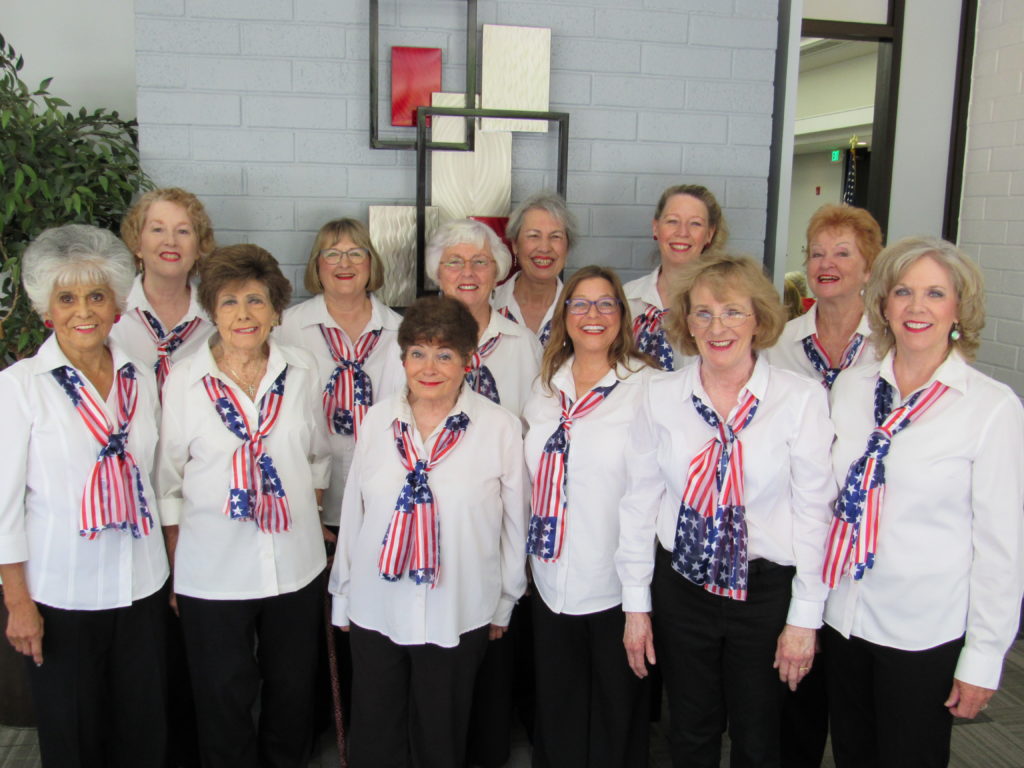
California Note Catchers
Entertainment will be provided by the California Note Catchers, a nonprofit women’s barbershop harmony chorus. We’ll enjoy a buffet style lunch at approximately 12:15 pm, with ham, roast turkey, rosemary potatoes, green beans almandine, salads, desserts, and beverages. This is an indoor event with ample free parking on both sides of the center.
When
Thursday, June 27, 2019 at 11:00am
Lunch at approximately 12:15pm
Where
Ronald Reagan Community Center
195 E Douglas Ave, El Cajon, CA 92020
Menu
Buffet style lunch with ham, roast turkey, rosemary potatoes, green beans almandine, salads, desserts, and beverages.
Cost
$14 per person
Directions
The Ronald Reagan Community Center is located one block south of E. Main Street, El Cajon, directly off Magnolia Ave. Take I-8 to Magnolia off-ramp, go south to E. Douglas and turn left.
 Registration
Registration
The registration deadline is Friday, June 21. Name badges and opportunity drawing tickets should be picked up at the check-in table at the luncheon. They will not be mailed.
Register by Mail:
- Print and fill out the registration form.
- Make a check payable to RESDC for $14 per person.
- Mail registration form, along with check, to RESDC, 8825 Aero Dr., Suite 205, San Diego, CA 92123.
Register Online: Click here and follow the steps to register online. You will need to use the email associated with your member account. Click “Add guest” to add additional registrants for $14 each. To pay for yourself and guests, click “Pay Online” and pay with credit card.
Register by Phone: Call the RESDC Office at (619) 688-9229 during our hours of 9 am – 2 pm Mon-Fri.
For questions or assistance registering, contact us at (619) 688-9229 or resdc@resdc.net. ◾
Welcome New Members
Patricia DeLillo* – Superior Court
Ulpiano B. Garchitorena – Environmental Health
Florencia S. Manuel – Health & Human Services
Daniel M. Medrano
Amor V. Pia – Health & Human Services
Remedios M. Quitoriano – Health & Human Services
Carra L. Rhamy – County Counsel
Patricia C. Sahagun – Superior Court
Betty A. Thomas – Health & Human Services
Evelyn J. Williams
*Associate Member
The surviving Spouse of a member is eligible for RESDC membership. For enrollment assistance, please call: (866) 688-9229. ◾
NETWORK is the official monthly newsletter of the Retired Employees of San Diego County, Inc. (RESDC), a private non-profit organization.
The information printed in the NETWORK is believed to be from reliable sources. However, no responsibility is assumed by the NETWORK for inaccuracies contained herein.
Business and Inquiries: Business matters and address changes may be recorded on our voicemail at any time, call (866) 688-9229. Please spell your name so the correct member record can be located.
Retired Employees of San Diego County, Inc.
8825 Aero Drive, Suite 205 | San Diego, CA 92123
Office Hours: 9 a.m. to 2 p.m. Monday through Friday
TELEPHONE: (866) 688-9229 Toll Free
FAX: (619) 688-0766
E-MAIL: resdc@resdc.net

